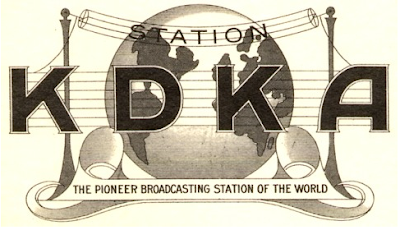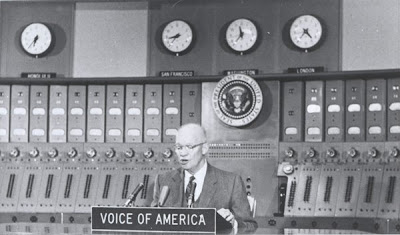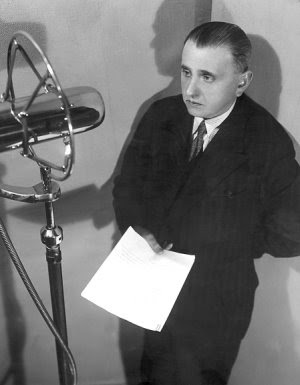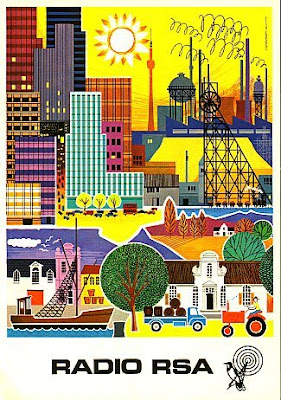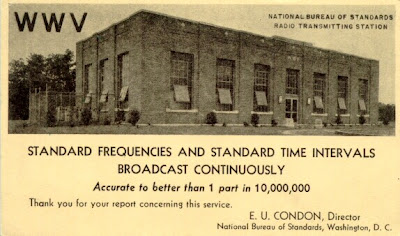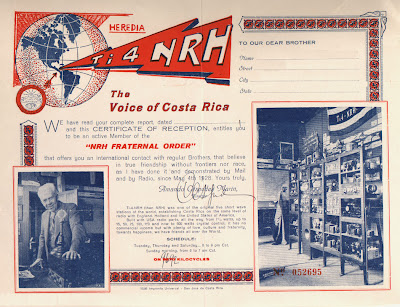News of the disaster was sent by wireless
Titantic's SOS as copied by SS Birma
Photo of Titanic wireless station
Following is a log of wireless traffic between the HMS Titanic and ships steaming to her rescue on April 15, 1912. All times are by the ship's clock.
12-15 a.m
CQD (6 times) DE (this is) MGY (6 times) position 41.44 N. 50.24 W
La Provence and Frankfurt receive Titanic's first distress signals.
Titanic sends position to Frankfurt. Frankfurt says "OK: stand by"
12-15 a.m
Mount Temple heard Titanic sending CQD Says require assistance. Gives position. Cannot hear me (sic). Advise my Captain (sic) his position at 41.46 N. 50.24 W.
12-15 a.m.
Cape Race coast station hears Titanic giving position on CQD 41.44 N. 50.24 W.
12-18 a.m.
Ypiranga hears CQD from Titanic. Titanic gives CQD here (sic). Position 41.44 N. 50.24 W. Require assistance (calls about 10 times).
12-25 a.m.
Carpathia calls Titanic and says "do you know that Cape Cod is sending a batch of messages for you ?"
Titanic says "Come at once. We have struck a berg.
It's a CQD OM (it's a distress situation old man) Position 41.46 N. 50.14 W."
Carpathia says "Shall I tell my Captain ?. Do you require assistance ?"
Titanic says "yes, come quick"
12-25 a.m.
Cape Race hears MGY (Titanic) give corrected position 41.46 N. 50.14 W. Calling him, no answer.
12-25 a.m.
MGY (Titanic) says CQD, Here (is my) corrected position 41.46 N. 50.14 W. Require immediate assistance. We have collision with iceberg. Sinking. Can hear nothing for noise of steam (engineers releasing excess steam pressure from boilers to minimise risk of explosion) Sent about 15 to 20 times to Ypiranga.
12-26 a.m.
DKF (Prinz Friedrich Wilhelm) calls MGY (Titanic) and gives position at 12 a.m. 39.47 N. 50.10 W.
MGY (Titanic) says, "Are you coming to our ?" "We have collision with iceberg. Sinking. Please tell Captain to come." DKF says, "O.K. will tell"
12-27 a.m.
Titanic sends following: "I require assistance immediately. Struck by iceberg in 41.46 N. 50.14 W."
12-30 a.m.
Caronia sent CQ message (message addressed to all ships) to MBC Baltic and CQD (ie: a distress relay message): MGY(Titanic) struck iceberg, require immediate assistance
12-30 a.m.
Mount Temple hears MGY (Titanic) still calling CQD. Our (sic) Captain reverses ship. We are about 50 miles off.
12-34 a.m.
Mount Temple hears Frankfurt give MGY (Titanic) his position 39.47 N. 52.10 W.
Titanic says (to Frankfurt) " are you coming to our
assistance ?"
Frankfurt says : "what is the matter with you ?"
Titanic says "We have struck an iceberg and sinking. Please tell Captain to come"
Frankfurt replies "O.K. Will tell the bridge right away"
Titanic says "O.K., yes, quick."
12-45 a.m.
Titanic calls Olympic (Olympic is Titanic's sister ship - 500 miles away en route to England) SOS.
12-50 a.m.
Titanic calls CQD and says, "I require immediate assistance. Position 41.46 N. 50.14 W." Received by Celtic.
12-53 a.m.
Caronia to MBC (Baltic) and SOS,"MGY (Titanic) CQD in 41.46 N. 40.14 W. Wants immediate assistance."
1-0 a.m.
MGY gives distress signal. DDC (Cincinnati) replies. MGY's position 41.46 N. 50.14 W. Assistance from DDC (Cincinnati) not necessary as MKC (Olympic) shortly afterwards answers distress call.
1-0 a.m.
Titanic replies to Olympic and gives his position as 41.46 N. 50.14 W., and says, "We have struck an iceberg."
1-2 a.m.
Titanic calls Asian and said, "Want immediate assistance" Asian answered at once and received Titanic's position as 41.46 N. 50.14 W., which he immediately takes to the bridge. Captain instructs operator to have Titanic's position repeated.
1-2 a.m.
Virginian calls Titanic but gets no response. Cape Race tells Virginian to report to his Captain the Titanic has struck iceberg and requires immediate assistance.
1-10 a.m.
Titanic to MKC (Olympic), "We are in collision with berg. Sinking Head down. 41.46 N. 50.14 W. Come soon as possible."
1-10 a.m.
Titanic to MKC (Olympic), Captain says, "Get your boats ready. What is your position?"
1-15 a.m.
Baltic to Caronia, "Please tell Titanic we are making towards her."
1-20 a.m
Virginian hears MCE (Cape Race) inform MGY (Titanic) "that we are going to his assistance. Our position 170 miles N. of Titanic."
1-25 a.m.
Caronia tells Titanic, "Baltic coming to your assistance"
1-25 a.m
Olympic sends position to Titanic 4-24 a.m. G.M.T. 40.52 N. 61.18 W, and asks "Are you steering southerly to meet us?" Titanic replies, "We are putting the women off in the boats."
1-27 a.m
Titanic says, "We are putting the women off in the boats."
1-30 a.m
Titanic tells Olympic, "We are putting passengers off in small boats." "Women and Children in boats, can not last much longer"
1-35 a.m.
Olympic asks Titanic what weather he had. Titanic replies, "Clear and calm."
1-35 a.m
Baltic hears Titanic say "Engine room getting flooded."
1-35 a.m.
Mount Temple hears DFT (Frankfurt) ask "are there any boats around you already?" No reply
1-37 a.m.
Baltic tells Titanic, "We are rushing to you."
1-40 a.m.
Olympic to Titanic "Am lighting up all possible boilers as fast as (we) can."
1-40 a.m.
Cape Race says to Virginia: "Please tell your Captain this: "The Olympic is making all speed for Titanic, but his (Olympic's) position is 40.32 N. 61.18 W. You are much nearer to Titanic. The Titanic is already putting women off in the boats, and he says the weather there is calm and clear. The Olympic is the only ship we have heard say, "Going to the assistance of Titanic. The others must be a long way from Titanic
1-45 a.m.
Last signals heard from Titanic by Carpathia, "Come as quickly as possible old man: the engine-room is filling up to the boilers"
1-45 a.m.
Mount Temple hears Frankfurt calling Titanic. No reply.
1-47 a.m.
Caronia hears Titanic though signals unreadable still. Virginia hears Titanic calling very faintly, his power being greatly reduced.
1-48 a.m.
Asian heard Titanic call SOS Asian answers Titanic but receives no answer.
DFT (Frankfurt) calls Titanic and says, "What is the matter with u ?"
1-50 a.m.
Titanic says to Frankfurt "You fool, stdbi and keep out"
Caronia hears Frankfurt working to Titanic. Frankfurt according to position 172 miles from MGY (Titanic) at time first SOS sent out.
1-55 a.m.
Cape Race says to Virginian "we have not heard Titanic for about half an hour. His power may be gone."
2-10 a.m.
Virginian hears 2 v's signalled faintly in spark similar to Titanic's.
2-17 a.m.
Virginian hears Titanic call CQ (call to all ships) , but unable to read him. Titanic's signals end very abruptly as (if) power suddenly switched off. His spark rather blurred or ragged...
2-17 a.m.
Virginian Called Titanic and suggested he should try emergency set, but heard no response.
2-20 a.m.
Virginian to Olympic,"have you heard anything about Titanic" Olympic says, "No. Keeping strict watch, but hear nothing more from Titanic. No reply from him"
[2-20 a.m. was the official time the ship foundered in 41.46 N. 50.14 W. as given by the Carpathia in message to the Olympic.]
2-35 a.m.
Mount Temple hears MPA (Carpathia) send, "If you are there we are firing rockets."
2-40 a.m.
MPA (Carpathia) calling MGY (Titanic).
2-58 a.m.
SBA (Birma) thinks he hears Titanic so sends, "Steaming full speed for you. Shall arrive you
6-0 in morning. Hope you are safe. We are only 50 miles now."
3-0 a.m.
MPA (Carpathia) calling MGY (Titanic)
3-28 a.m.
La Provence to Celtic, "Nobody has heard the Titanic for about 2 hours."
4-24 a.m.
SBA (Birma) says "we are 30 miles S.W. off Titanic".
6-40 a.m.
Parisian hears weak signals from MPA (Carpathia) or some station saying Titanic struck iceberg. Carpathia has passengers from lifeboats
6-40 a.m.
Asian, with German oil tank in tow for Halifax asked what news of MGY (Titanic). Sends service (message) later saying heard MGY (Titanic) v. faint working. C. Race up to 10.0 p.m., local time. Finished calling SOS midnight.
7-40 a.m.
6-45 a.m. Mount Temple hears MPA (Carpathia) report rescued 20 boat loads.
8-07 a.m.
Baltic sends following to Carpathia: "Can I be of any assistance to you as regards taking some of the passengers from you? Will be in position about 4-30. Let me know if you alter your position."
8-10 a.m.
Baltic in communication with MPA. (Carpathia). Exchanged traffic re passengers, and get instructions to proceed to Liverpool
8-15 a.m.
Baltic turns round for Liverpool, having steamed 134 miles W. towards Titanic
8-40 a.m.
Mount Temple hears MPA (Carpathia) call CQ and say, no need to std. Bi (stand by) him. Advise my Captain (sic), who has been cruising round the icefield with no result. Ship reversed.
8-45 a.m.
Olympic sent MSG (message) to Owners, New York via Sable Island saying, "Have not communicated with Titanic since midnight."
8-55 a.m.
Carpathia replies to Baltic, "Am proceeding to Halifax or New York full speed. You had better proceed to Liverpool. Have about 800 passengers on board."
9-0 a.m.
Carpathia to Virginian: "We are leaving here with all on board about 800 passengers. Please return to your Northern course."

